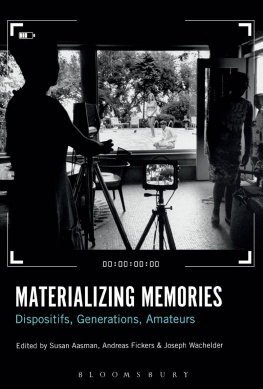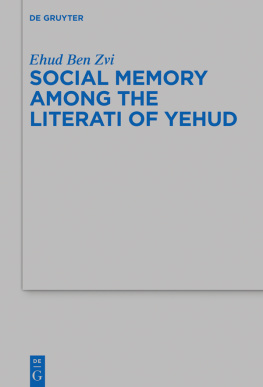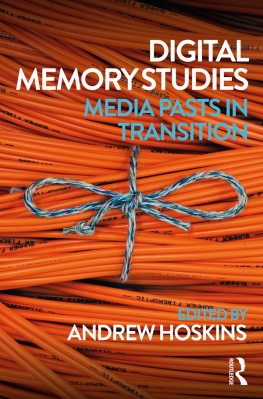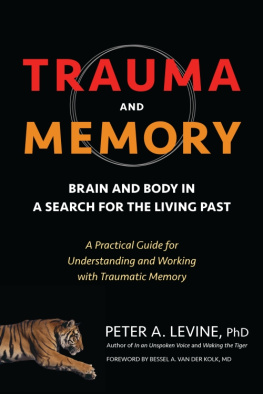ACKNOWLEDGMENTS
Each time we reach out to our mobile phone and make a picture or a video of our daily lives, our friends and family, or a cherished object, we are in the middle of a mediated memory practice. Making memories using amateur media technologies have become ubiquitous. The same applies for the circulation of these sounds and images via various digital media platforms, apps and cloud services. We share these digital representations with friends via Facebook, YouTube or WhatsApp or store them safely in the cloud. The wish to understand the cultural and social implications of the proliferation of mediated memory practices from a long term historical perspective lies at the heart of Materializing Memories: Dispositifs, Generations, Amateurs. By combining three central concepts with theoretical reflections and case studies, we hope to provide an historical and systematic framework for analysing the cultural and social dynamics of mediated memory practices.
This volume is the outcome of a collaboration, that started formally in January 2012 when the research project Changing Platforms of Ritualized Memory Practices: The Cultural Dynamics of Home Movies was funded by the Netherlands Organisation for Scientific Research (NWO). Researchers from Maastricht University, the University of Groningen and later on the Universit de Luxembourg explored more than hundred years of home movie making. Right from the start, two museums were engaged. The Limburgs Museum (Venlo, Netherlands) and Museum House of Alijn (Ghent, Belgium) were partners in outreach activities. Frank Holthuizen, assisted by project member Tim van der Heijden, curated the exhibition A century of home cinema: from projector to smartphone in the Limburgs Museum. Jasper Rigole and Edwin Carels curated two exhibitions about Homeless Movies in Museum House of Alijn. We are grateful for the many fruitful exchanges; it was great to have you in our team.
Throughout the project, many exchanges with scholars, archivists, and artists from different fields helped to develop our main ideas. Diverse activities, such as workshops, discussions, interviews, experiments, made this research project a very special endeavor. We would like to thank our partners in co-organizing workshops: the Institut fr Landeskunde und Regionalgeschichte Bonn for How to keep our audiovisual memories save? (2013); the University of Luxembourg for Dispositif (2014); the Haus der Wissenschaft in Bremen for Media Generations (2014); and Maastricht University for Amateurs and/as Experts (2014). The many colleagues that participated in these workshops offered numerous inspirations and critical thoughts that had a lasting impact on how our research developed. The University of Groningen kindly hosted the conference Changing platforms of Ritualized Memory Practices in 2015. The support of archives turned out indispensable. We express our gratitude to The Netherlands Institute for Sound and Vision, Limburgs Film en Video Archief, Groninger Archieven, Huis van Alijn, and the Internet Archive. A special word of thanks to the many individuals who put us into contact with their collections of home movies, cameras, projectors, film manuals, etc. Without their help, we would not have been able to do our research.
We would like to thank the contributors of this edited volume for focusing on the concepts we proposed. Tom Slootweg and Tim van der Heijden turned out dedicated and creative PhD candidates. They not only put full effort in their own research, but also in the many activities and diverse outputs of the project as well. The project blog, among others, testifies to this. Thanks to Tim and Tom, academic collaboration and shared research interests became a wonderful and rewarding experience. We cherish our materialized memories. Finally, this book benefited greatly from the elaborate comments by the anonymous reviewers. It could not have been made without our copy-editor Ton Brouwers, and the great support from our publisher Bloomsbury.
SUSAN, ANDREAS and JOSEPH (March 2018)
Introduction
Susan Aasman, Andreas Fickers, and Joseph Wachelder
This volume explores the cultural role and significance of amateur mediated memory practices, with a strong focus on home movies, yet not an exclusive one, and we do so from a longue dure perspective. Home movie practices originated in the early part of the twentieth century as a privileged activity of a small elite from well-to-do families. The domestication of such practices ran parallel to the institutionalization of amateur film in general (Van der Heijden 2018). As a result, amateur films, home movies, and family films are sometimes used as interchangeable categories that may refer to overlapping collections of films. Some scholars, such as Roger Odin (this volume), argue that for some time home movies and family films could almost be equated. Others, such as Danile Wecker (this volume), highlight typical differences in subject, style, and aesthetics in amateur collections, leading to the conclusion that the home movie comprised more genres than the family film. From an institutional point of view, amateur film practices and home movie film making increasingly diverged, giving rise to widely different reactions to the introduction of video (Slootweg this volume). Today, when it comes to staying in touch with relatives, families, or friends, one can choose from a multitude of devices to make, share, and store mediated memories. The repertoires of hitherto separate communication and recording technologies have converged into numerous digital media platforms. Every year, it seems, new genres and technologies become fashionable: video diaries, Facebook live streams, or snapchat videos. The memory function may thereby be subordinated to other functions, such as the immediate experience of sharing. This has various implications regarding content and audience. In most cases, for example, peer-to-peer videos are no longer restricted to family (kinship) relationships. If we characterize user-generated content as an amateur practice, does this still pertain to the realm of home moviemaking? Practices of on-going reuse raise similar concerns. Private videos uploaded on YouTube can be repurposed, disseminated, and remixed by users who are neither the original authors nor the original owners of this material.
In this volume, we argue that, to grasp the cultural dynamics of mediated memory practices, we need a multidimensional conceptual approach that can support historical analyses in theoretically sophisticated ways. To this end, we organized the contributions to this collection around three concepts that serve as main analytical lenses: dispositifs, generations, and amateurs. Put briefly, the concept of dispositif can be used productively for investigating the various interrelations between texts, material (technological) affordances, and the social/cultural context from a pragmatic point of view. The concept of generations helps us to historicize user groups and specific technologies over time. The concept of amateurs allows us to build on historically and sociologically established understandings of mediated memory practices by situating specific user groups among a range of such groups, including professionals.
Conceptual framework
A discussion of a concrete case may show the relevance, suitability, and complementarity of these three concepts for analyzing materializing memories: an This art project called








